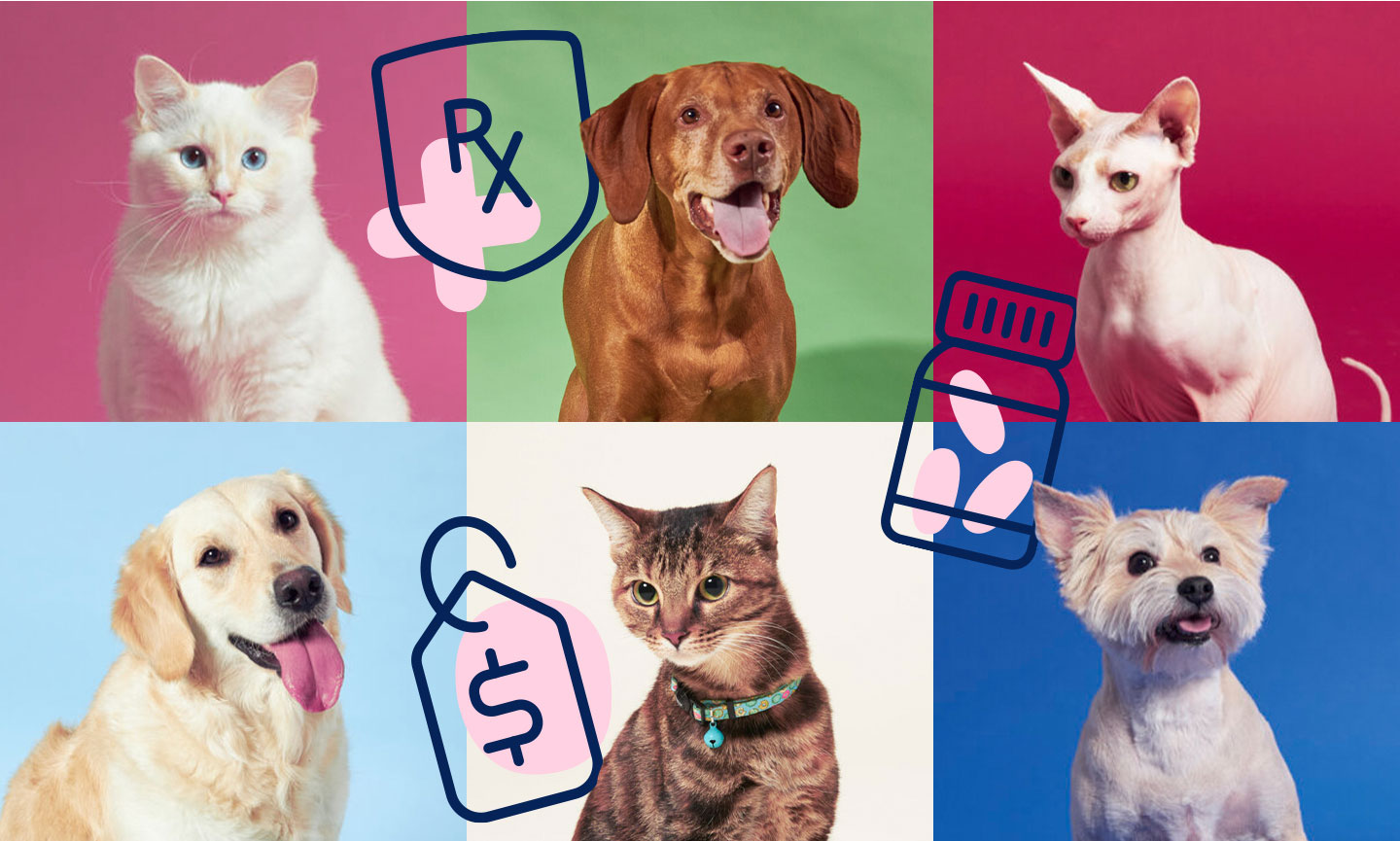Pet Insurance And Preventive Care: Keeping Pets Healthy
Pet owners want their furry companions to stay healthy and happy, but unexpected medical emergencies or chronic conditions can be costly. Pet insurance and preventive care offer financial protection and ensure that pets receive timely medical attention. This guide explores the importance of pet insurance, the role of preventive care, and how both contribute to keeping pets healthy.
What Is Pet Insurance?

Pet insurance is a financial safety net that covers veterinary expenses in case of illness, injury, or unexpected health issues. Similar to health insurance for humans, pet insurance policies help mitigate the cost of medical treatments, allowing pet owners to focus on their pet’s health without worrying about excessive expenses.
How Does Pet Insurance Work?
Pet insurance works by reimbursing a percentage of veterinary costs after the pet receives treatment. Pet owners pay a monthly or annual premium based on factors such as the pet’s age, breed, and coverage plan.
Key Components of Pet Insurance:
- Premiums: Regular payments made to maintain coverage.
- Deductible: The amount the pet owner pays before the insurance starts covering costs.
- Reimbursement Rate: The percentage of the bill covered by the insurance provider, typically ranging from 70% to 90%.
- Coverage Limits: Maximum annual or lifetime amount the policy will pay.
Types of Pet Insurance Coverage

1. Accident-Only Coverage
Covers veterinary expenses related to accidental injuries such as fractures, bites, and poisoning.
Pros:
- Affordable premiums.
- Ideal for younger, active pets.
Cons:
- Does not cover illnesses or chronic conditions.
2. Accident and Illness Coverage
Includes coverage for accidents and medical conditions such as infections, cancer, and hereditary diseases.
Pros:
- Comprehensive coverage for various medical issues.
- Suitable for pets with a higher risk of illness.
Cons:
- Higher premiums compared to accident-only policies.
3. Comprehensive Coverage (Wellness Plans)
Offers a combination of accident, illness, and preventive care, including vaccinations, routine exams, and dental cleanings.
Pros:
- Covers a wide range of health services.
- Ensures regular preventive care.
Cons:
- Higher monthly costs.
What Is Preventive Care for Pets?
Preventive care focuses on maintaining a pet’s overall health and preventing illnesses before they arise. Regular check-ups, vaccinations, parasite control, and dental care contribute to early detection and treatment of potential health problems.
Essential Elements of Preventive Care
1. Annual Veterinary Check-Ups
Routine exams allow veterinarians to assess a pet’s health, identify issues early, and recommend lifestyle changes or treatments.
2. Vaccinations and Immunizations
Vaccinations protect pets from contagious diseases such as rabies, distemper, and parvovirus. A regular vaccination schedule helps maintain immunity.
3. Parasite Prevention
Preventing fleas, ticks, heartworms, and intestinal parasites is essential for a pet’s well-being. Monthly preventive treatments protect against infestations and diseases.
4. Dental Care
Oral hygiene prevents dental diseases and complications. Regular cleanings and home dental care reduce the risk of gum disease, infections, and tooth loss.
5. Spaying and Neutering
Spaying or neutering prevents unwanted pregnancies and reduces the risk of certain cancers and behavioral problems.
6. Nutrition and Weight Management
Proper diet and weight management prevent obesity, which can lead to diabetes, joint problems, and heart disease.
7. Behavioral Training
Training helps address behavioral issues, reducing stress and improving the pet’s overall quality of life.
Benefits of Combining Pet Insurance and Preventive Care
1. Financial Protection
Pet insurance reduces the financial burden of unexpected veterinary expenses, while preventive care minimizes the likelihood of costly treatments.
2. Early Detection and Treatment
Preventive care enables early diagnosis of health conditions, increasing the chances of successful treatment and reducing long-term costs.
3. Improved Quality of Life
Regular check-ups, vaccinations, and parasite control keep pets healthy and comfortable, enhancing their overall quality of life.
4. Peace of Mind for Pet Owners
Knowing that medical expenses are covered and that pets are receiving preventive care allows owners to focus on enjoying time with their furry companions.
How to Choose the Right Pet Insurance
1. Evaluate Coverage Options
Choose a plan that covers accidents, illnesses, and preventive care based on your pet’s needs and risk factors.
2. Consider Reimbursement Rates and Deductibles
Balance affordability and coverage by selecting a reimbursement rate and deductible that fits your budget.
3. Check Policy Exclusions
Understand the exclusions and limitations of the policy, including pre-existing conditions and breed-specific exclusions.
4. Compare Providers
Research different insurance providers, read customer reviews, and compare policy features to select the best option.
Tips for Preventive Care Success

1. Schedule Regular Veterinary Visits
Maintain a consistent schedule of wellness exams to monitor your pet’s health and address potential issues.
2. Follow a Vaccination Schedule
Stay up to date on vaccinations to protect your pet from preventable diseases.
3. Maintain Proper Grooming and Dental Care
Regular grooming and dental cleanings prevent skin infections and dental problems.
4. Monitor Diet and Exercise
Ensure your pet maintains a healthy weight by providing balanced nutrition and regular exercise.
Common Misconceptions About Pet Insurance and Preventive Care
1. “My Pet Is Healthy, So I Don’t Need Insurance”
Accidents and unexpected illnesses can happen at any time, making insurance valuable even for healthy pets.
2. “Preventive Care Isn’t Necessary for Indoor Pets”
Indoor pets can still be exposed to parasites, dental issues, and hereditary conditions. Preventive care is essential for all pets.
3. “Pet Insurance Covers All Veterinary Costs”
Most policies exclude pre-existing conditions and routine preventive care unless included in a comprehensive plan.
Also Read : How To Choose The Best Home Insurance Policy For Your Needs
Conclusion
Pet insurance and preventive care work hand in hand to safeguard a pet’s health and well-being. By investing in a reliable insurance plan and committing to regular veterinary care, pet owners can protect their pets from unexpected medical expenses and ensure they live long, healthy lives. Taking a proactive approach to preventive care not only improves a pet’s quality of life but also minimizes the risk of serious health conditions.
Frequently Asked Questions (FAQs)
1. Is pet insurance worth it?
Yes, pet insurance helps cover unexpected veterinary costs, providing financial security and peace of mind.
2. What does pet insurance typically cover?
Pet insurance usually covers accidents, illnesses, surgeries, and emergency care. Some plans also include preventive care.
3. Can I get insurance for older pets?
Yes, but premiums may be higher, and some conditions may be excluded due to age.
4. Does pet insurance cover routine vaccinations?
Standard policies do not cover vaccinations, but wellness plans or comprehensive coverage may include preventive care.
5. How do I know which pet insurance plan is best?
Compare coverage options, deductibles, reimbursement rates, and customer reviews to select a plan that fits your pet’s needs.
